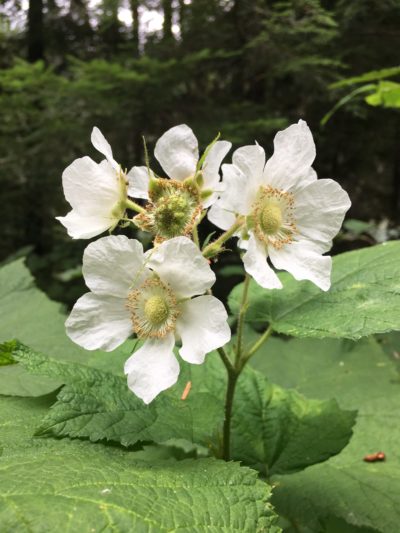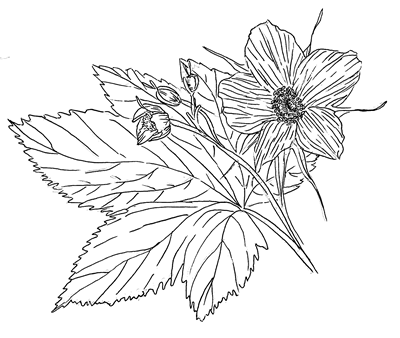
Thimbleberry, Rubus parviflorus
Rosaceae – Rose family
“Rubus” is the Latin name for blackberry and is likely derived from the red (“rubus”) color of both immature fruit (blackberries are red before they turn black) and mature fruit (such as the bright red of ripe thimbleberry and raspberry) of this genus. The flowers occur in loose clusters of four to eight and have five white petals around the central stamens and pistils. Compared to the denser flower clusters of related species, those of thimbleberry may seem relatively sparse (“parvi”) of flowers (“florus”), thereby explaining the specific name.
Thimbleberry stands erect to a height of three to seven feet in sunnier locations of the forest, proudly displaying its broad, light green palmate leaves. Thimbleberry plants like other raspberries spread by underground stems, and may form a small thicket in favorable conditions.
The lack of thorns and sweet red berries encouraged widespread harvesting among Northwest Native groups. The berries could be eaten fresh, or dried and stored. In early spring, the young sprouts were consumed as vegetable greens. The broad leaves were used as a wrap for cooked berries. Thimbleberry had other diverse uses, such as using boiled bark for soap, powdered dry leaves to prevent burns from forming scars, and leaves for a tea to treat anemia.


Information courtesy of “The View From Springbrook Park; an Illustrated Natural History” by Ed Chinn.
Sponsored by Friends of Springbrook Park, Lake Oswego, OR
Illustrated by Michelle Tanz